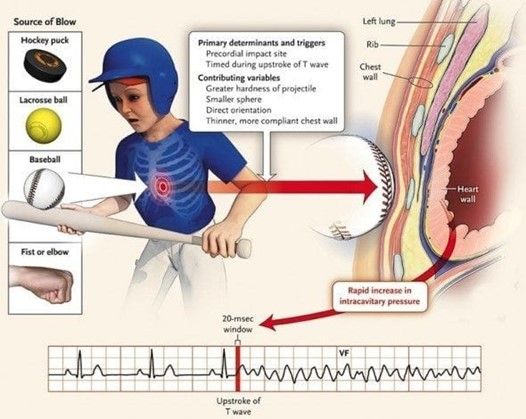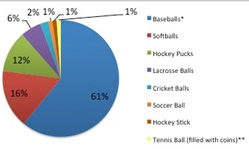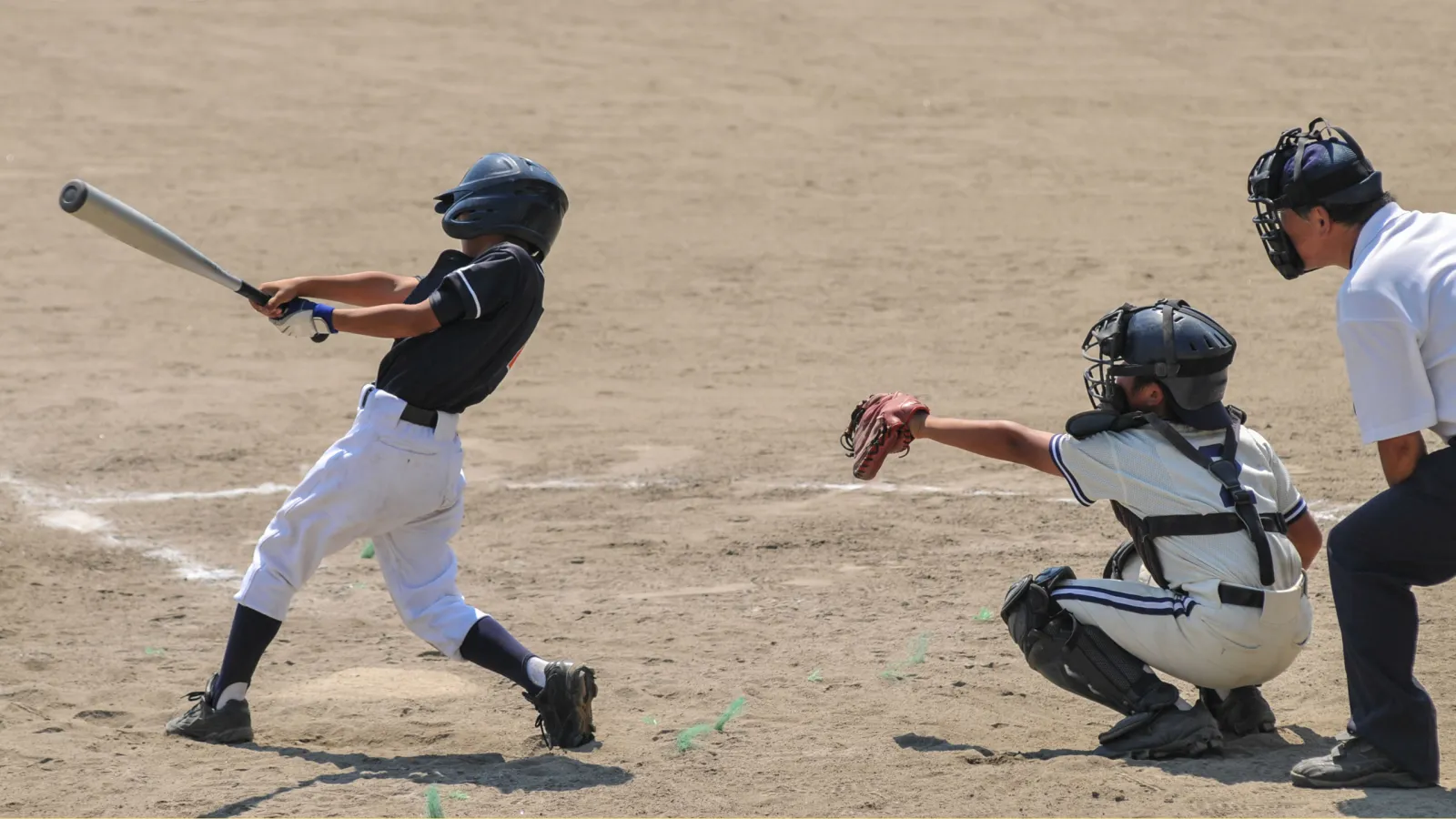
With the weather warming up and spring sports starting
again, coaches, parents, and athletes should all know the dangers and signs of
commotio cordis. Commotio cordis is caused by a sudden impact to the chest inducing
sudden cardiac death (SCD). This phenomenon most commonly occurs in sports
where a projectile strikes the chest wall with significant force such as
baseball, softball, lacrosse, hockey, and cricket, with baseball being the most
prevalent. Adolescents are particularly at risk because of the higher rate of
these individuals participating in these sports, but also because the chest
wall stiffens after age 20.1 Timing also plays a large role in
incidence. The heart is the most vulnerable when it is struck during the
beginning of the T-wave of the heart rhythm.
If a person is struck in the chest with a small, dense
object, they may collapse and go unconscious, stop breathing, and have no
pulse. When commotio cordis is suspected it is absolutely imperative that
immediate CPR and use of the automatic external defibrillator (AED) be
implemented. For every 1-minute delay of the shock delivery, survival rate goes
down by 10%.2 911 should be called in all cases. Once the athlete
has recovered, they should see their physician for a cardiac evaluation, including
an electrocardiogram (ECG), before returning to sports. The athlete's athletic
trainer should use their clinical judgement during the return to play process
and carefully watch to ensure a cardiac episode doesn't occur.
So how do we prevent commotio cordis? While it is nearly
impossible to prevent someone from getting hit in the chest with an object,
there are things that schools and sports teams can do to help ensure the safety
of the athletes if an incident were to occur.
- An athletic trainer should be present at all sporting events to take immediate action if necessary
- Coaches should be CPR certified. This is a requirement in most states
- An AED should be easily accessible at all times
- There should be an emergency action plan (EAP) in place. This should be practiced at least annually
- Coaches should teach athletes how to avoid getting hit by balls/pucks
- Educate coaches, athletes, and parents about the signs of commotio cordis
- Athletes can wear protective chest pads to help dissipate any force caused by an impact to decrease the chance of another incident

While the prevalence of commotio cordis is rare, it is still
important to know the signs of this phenomenon and how to respond during this
medical emergency. If you don't know where an AED is at your sporting event,
ask your athletic trainer or coach.
References
- Link MS. Commotio Cordis. Circulation: Arrhythmia and Electrophysiology. 2012; 5(2): 425-432.
- Commotio Cordis. Korey Stringer Institute. Published March 4, 2015. Accessed March 10, 2022. https://ksi.uconn.edu/emergency-conditions/cardiac-conditions/commotio-cordis/#.
About the author:

